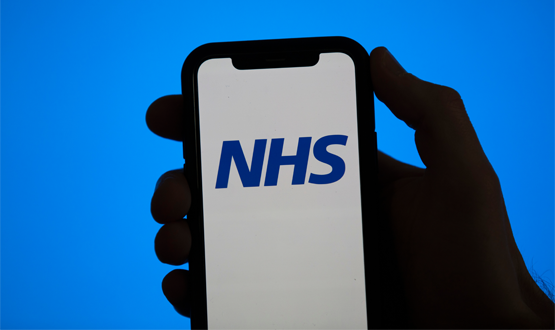Open eyes to NHS open source
- 27 June 2013

Earlier this month, health secretary Jeremy Hunt and NHS England’s director of patients and information Tim Kelsey were in the US, talking up the NHS as a trailblazer in all things tech and all things open.
Along with a plethora of high-powered NHS managers, they were at the Datapolooza conference to say that open data in the NHS is set to be bigger than the internet. Heady stuff.
At the same time, NHS England has been funding visits to the US Veterans Health Administration, to look at its much-admired VistA open source electronic medical record system.
The aim of the visits is to see what the NHS can learn from the VA’s experience of open source and, potentially, to investigate whether the English NHS can re-write the system for its own use. Again, heady stuff.
High level support
The idea of Anglicising VistA is said to be strongly advocated by some within the leadership of NHS England, including chief data officer Dr Geraint Lewis, who first championed the concept while at the Nuffield Trust think-tank.
EHI understands that NHS England is drawing up plans to commit millions, possibly tens of millions, of pounds from the £260m technology fund to funding open source software, potentially including an NHS version of VistA.
Industry body Intellect is being canvassed for its thoughts on spending technology fund money in this way and on steps to develop an open source market.
One idea appears to be based around a model of centrally funding a project to anglicise the VA’s version of VistA and get a smallish group of trusts to commit to collaborating on the project. The cost is unknown, but in 2012 the online group NHS VistA breezily estimated the cost at £20m.
Infrastructure builds confidence
Open source has already been used with great success by NHS England to begin to rebuild the NHS’ national information infrastructure.
The early success of a skunk-works project to build an NHS Spine replacement, using open source and agile methodologies, by Leeds-based BJSS, has built confidence. Reportedly, the work has been done for a fraction of the billion pounds spent with BT on the original Spine.
The Hospital Episodes Statistics is now being rebuilt in open source by the same company, and NHS England is tendering to rebuild Choose and Book as an open source e-referrals service.
An appealing idea
Open source is closely allied to the wider concepts of open systems and open data. The government is keen to encourage clinical software providers to open up their interfaces and APIs to unlock data, enable far greater interoperability, and make it easier for small businesses and clinical entrepreneurs to develop new systems and services.
Openness and interoperability are key requirements in the GP Systems of Choice procurement; and similar openness can be expected in the guidance that NHS England is due to issue to trusts on implementation of new record systems next week.
Few would argue against the benefits of opening up clinical systems in this way, or against tackling data lock-in to proprietary providers. Indeed, the open source model and ethos have very obvious attractions to the collectivist culture of the health service.
Collaborative, shared development of clinical software would be in sharp contrast to the slow, painful and expensive process of getting even trivial changes made through crushing contract change notifications under the local service provider contracts placed a decade ago by NPfIT.
If successful, it would also hold out the potential to eventually save the NHS hundreds of millions – and maybe billions – of pounds in software licensing fees. Small wonder it is attractive to the Department of Health’s leaders, the Cabinet Office and Treasury.
Free doesn’t mean free
However, there are reasons for caution. NPfIT voodoo economics aside, the NHS has too often been unwilling to pay the price needed to support the development of high quality software.
And the idea that open source software is free is, of course, a fallacy. It is generally accepted that 80% of the cost of an IT project is in change management, staffing and support, which will have to be paid wherever the software comes from.
Business and patient-critical clinical software also needs to be supported and maintained, which also costs money, however it is developed initially.
Meanwhile, the argument for NHS Vista appears to be partly motivated by a desire to manage the NHS IT market and force it to an open source paradigm.
Yet the Department of Health has a dismal record of attempting to manage IT supplier markets; so that’s not exactly encouraging. Since NPfIT’s demise, talk about encouraging innovation and SMEs has rarely been matched by practical support on procurement policies.
Learning the lessons of the last national programme
Some advocates of the NHS VistA project have even grander ambitions. They argue that it would enable a single shared system to be used across the whole of health and social care, enabling a clinician to use the same system wherever they happen to work.
The spectacular failure to achieve just such a vision over the last decade is attributed to NPfIT’s failure to choose open source as the way forward.
Not only was it not that simple, but a new, national programme to develop an NHS version of VistA would face several very serious problems, which may prove showstoppers.
First, and most obviously, everyone but everyone who has ever attempted to Anglicise a US electronic medical record system for the NHS has dramatically under-estimated the complexity of the task.
The core code kernel invariably needs to be extensively re-written because basic concepts of clinical care, billing and medicines prescribing are fundamentally different.
Those setting off down this track always assume that these issues won’t apply to them; yet they invariably do, sometimes to the huge cost of the trust involved.
So, any project to develop an NHS version of VistA needs to answer some tough questions on cost, time and take-up; and not to assume best-case scenario. An open and realistic evaluation of what would be required would surely be essential, as would a credible business plan.
Homegrown alternatives
Second, and following on from the above, the VA’s version of VistA is based on old, old code; much of it dating back to the 60s and 70s, and built on ever since. Developed over decades, the system is a textbook definition of spaghetti-code. Attempting to re-write core concepts would likely prove extremely fraught.
Third, it’s telling that the VA spends a far greater percentage of its annual budget on IT and information than the NHS. Of its $66.5 billion 2014 budget, the VA is set to spend $3.7 billion on IT, or 2.4% of total revenues. That’s more than the NHS spends on IT, and it has a budget almost twice as big.
Fourth, and perhaps most compelling, there are more promising NHS homegrown, ground-up open source alternatives. Given support, these could achieve many of the same objectives, and support a mixed economy of innovative proprietary and open source suppliers.
The most significant NHS open source innovators are NHS trusts. There’s Moorfields Eye Hospital with its Open Eyes EPR, which is already being developed in collaboration with other specialist trusts. There’s King’s College Healthcare, which is working on the Wardware nurse observation system with Tactix4.
There’s Leeds Teaching Hospitals NHS Trust, which is working on an open source integration engine and a city-wide patient record, and at The Christie in Manchester, which has an open source clinical portal.
There are also vibrant open source developer communities emerging that need nurturing and investment if they are to provide the innovative SMEs of the future.
No quick fixes, but lots of cheaper trips
Rather than attempt a risky US transplant in the hope of a quick fix, NHS England should focus its efforts on supporting and growing the open source innovation already underway in the NHS.
This will take time, resources and sustained commitment. But in the medium term it offers the prospect of achieving the type of front-line clinical engagement that so successfully nurtured the development and use of VistA within the VA.
London’s East End, Leeds and Manchester may not have the same allure as Washington DC for Hunt and his team. But those developing a strategy for the NHS use of open source would be well advised to make sure their next trips are by tube and train, rather than by plane.




